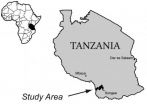(Press-News.org) PROVIDENCE, R.I. [Brown University] — Inside the brains of mice and men alike, a relatively big football-shaped region called the thalamus acts like a switchboard, providing the prefrontal cortex, the part that does abstract thinking and decision-making, with most of its information. The thalamus's responsibility even includes helping the prefrontal cortex to maintain consciousness and arousal.
Essential as this "thalamocortical" partnership is, neuroscientists have understood very little about the connections coming from a matrix of cells in the so-called "nonspecific thalamus," where information other than from the senses is relayed. In a new paper published Dec. 5, 2012, in the Journal of Neuroscience, Brown University researchers report the first direct measurements in mice of cause-and-effect responses between the key thalamus cells in that matrix and those in the prefrontal cortex.
"These thalamic areas comprise the vast majority of the thalamus, but we know virtually nothing about the physiology of how they control [the] cortex," said one of the lead authors, Scott Cruikshank, assistant professor (research) of neuroscience at Brown.
Among the team's findings is that the nonspecific thalamus signals are most strongly received, at least at first, by inhibitory neurons in the outermost layer of cortex (layer 1). Neuroscientists had assumed that these signals instead mainly poured into excitatory cells of the cortex. It is only over time, with repetition of the thalamic signals, that the inhibitory layer 1 cells respond less strongly while the excitatory cells maintain a steady response. The result is a pattern in which the net effect of the thalamus signals is inhibitory in the cortex at first, but eventually gives way to a steadier, more even state of excitation over a few hundred milliseconds.
That ultimately sustained pattern of activation stands in stark contrast to the way the sensory signals from the specific thalamus play out in the cortex. The resulting excitation in those circuits starts out strong and then weakens with repetition — consistent with how people cease to notice sights, smells, and other sensory inputs after a while if they don't change.
A large part of the reason why neuroscientists didn't know this before is because the measurements that Cruikshank and his co-authors made were difficult, if not impossible, to perform using traditional electrical stimulation and recording techniques. Once mouse brain tissue is sliced up, the long connections that the thalamus sends to the cortex, called axons, are severed. Electrically stimulating the axons where they connect to cortex cells, but nothing else around them, was impossible to do.
A relatively new technique called optogenetics made their measurements possible. Optogenetics allows scientists to genetically engineer specific types of neurons so that their activity can be controlled by different colors of light. The team, including co-lead author Omar Ahmed and senior author Barry Connors, chair of neuroscience at Brown, optogenetically engineered the thalamic matrix cells so that their severed axons could be selectively stimulated with light. Because other nearby cell types had not been optogenetically engineered, the light didn't stimulate them, too.
Meanwhile the researchers recorded the electrical activity of the various cortical cells the thalamic axons connected to, to see how they responded to stimulation of the thalamic axons. Sometimes the researchers recorded just the layer 1 inhibitory neurons, sometimes they recorded just the deeper-layered excitatory neurons and sometimes they recorded the different neurons' responses simultaneously. Notably, the outer-layer and deeper-layer cortical neurons are connected to each other as well.
The key results were measurements showing that the inhibitory outer-layer neurons, known as "layer 1 interneurons," have a roughly three-times stronger initial response to the thalamic signals than the deeper excitatory "pyramidal" neurons did. The responses eventually evened out, leading to that steady-state excitement over time.
Cruikshank said the team does not yet know what the behavioral significance of that steady state is, but it could be related to the maintenance of a baseline of consciousness or attention, perhaps to keep the prefrontal cortex ready to accept and process information from other sources, such as sensory signals. Prior experiments have shown that when the nonspecific thalamus is damaged, subjects can fall into a coma, but that when the nonspecific thalamus is stimulated the cortex becomes more aroused.
Now, at least, neuroscientists know how that connection is being made.
###In addition to Cruikshank, Ahmed, and Connors, the paper's other authors are Tanya Stevens, Saundra Patrick, Amalia Gonzalez, and Margot Elmaleh. Gonzalez and Elmaleh are former undergraduates whose senior honors theses contributed to the paper.
Funding for the research came from the National Institutes of Health (grants MH086400, NS025983), the Defense Advanced Research Projects Agency (grant BAA-09-27), the National Science Foundation (EFRI-0937848) and the Brown Institute for Brain Science.
First measurements made of key brain links
Where the nonspecific thalamus meets the prefrontal cortex
2012-12-05
ELSE PRESS RELEASES FROM THIS DATE:
Protected 'power naps' prove helpful for doctors in training to fight fatigue
2012-12-05
PHILADELPHIA – New research from the Perelman School of Medicine at the University of Pennsylvania and the Philadelphia VA Medical Center indicates that the implementation of protected sleep periods for residents who are assigned to overnight shifts in a hospital represent a viable tool in preventing fatigue and alleviating the physiological and behavioral effects of sleep deprivation among these doctors in training. The new results will be published in the December 5th edition of the Journal of the American Medical Association (JAMA).
"Within the last two years, we've ...
New evidence on how compound found in red wine can help prevent cancer
2012-12-05
University of Leicester scientists will present groundbreaking new evidence about how a chemical found in red wine can help prevent cancer on Wednesday, December 5.
Experts from around the world are set to attend Resveratrol 2012, a major conference at the University which will assess the latest advances in the study of resveratrol – a compound found in the skins of red grapes.
The conference will feature new findings based on the last two years of research, which show how the chemical can help prevent cancer, heart disease and diabetes.
The event follows the first ...
Scientists find oldest dinosaur – or closest relative yet
2012-12-05
Researchers have discovered what may be the earliest dinosaur, a creature the size of a Labrador retriever, but with a five foot-long tail, that walked the Earth about 10 million years before more familiar dinosaurs like the small, swift-footed Eoraptor and Herrerasaurus.
The findings mean that the dinosaur lineage appeared 10 million to 15 million years earlier than fossils previously showed, originating in the Middle Triassic rather than in the Late Triassic period.
"If the newly named Nyasasaurus parringtoni is not the earliest dinosaur, then it is the closest relative ...
Hushed hoarders and prying pilferers
2012-12-05
VIDEO:
Eurasian jays change strategies to prevent others from stealing food and to improve their chances of absconding with other birds’ caches.
Click here for more information.
In order to prevent other birds from stealing the food they are storing for later, Eurasian jays, a type of corvid, minimizes any auditory hints a potential pilferer may use to steal their cache (food that is buried for later use). The new research was published today, 05 December, in the journal ...
Housing sales data used to estimate value of urban natural resources
2012-12-05
ST. PAUL, Minn., December 4, 2012 – Trees, water and lawn clearly matter to urban dwellers. For city planners balancing green space with other demands, the question has been just how much green space matters to residents.
Working with lead author Heather Sander of the University of Iowa, economist Robert Haight of the U.S. Forest Service's Northern Research Station estimated how much home buyers are willing to pay for more scenic vistas, better access to outdoor recreation, and greater neighborhood tree cover. Their study, "Estimating the economic value of cultural ecosystem ...
Telestroke cost effective for hospitals
2012-12-05
PHOENIX — Researchers have found that using telemedicine to deliver stroke care, also known as telestroke, appears to be cost-effective for rural hospitals that do not have an around-the-clock neurologist, or stroke expert, on staff. The research, published today in Circulation: Cardiovascular Quality and Outcomes, is intended to help hospital administrators evaluate telestroke.
In telestroke care, the use of a telestroke robot allows a patient with stroke to be examined in real time by a neurology specialist elsewhere who consults via computer with an emergency room ...
California's N2O emissions may be nearly triple current estimates
2012-12-05
Using a new method for estimating greenhouse gases that combines atmospheric measurements with model predictions, Lawrence Berkeley National Laboratory (Berkeley Lab) researchers have found that the level of nitrous oxide, a potent greenhouse gas, in California may be 2.5 to 3 times greater than the current inventory.
At that level, total N2O emissions—which are believed to come primarily from nitrogen fertilizers used in agricultural production—would account for about 8 percent of California's total greenhouse gas emissions. The findings were recently published in a ...
Rewriting personal history by inventing racist roads not taken
2012-12-05
Evanston, Ill. (December 4, 2012) – In 2008, research showed that expressing support for Barack Obama increased people's comfort in subsequently saying or doing things that might be considered racist. Researchers argued that endorsing a black political figure made people feel as if they had "non-racist credentials" that reduced their concern about subsequently seeming prejudiced. Now this same research group has identified a mental trick that people play to convince themselves that they have these same non-racist credentials: convincing themselves that they were presented ...
Evolution: Social exclusion leads to cooperation
2012-12-05
The study, by IIASA Evolution and Ecology Program postdoctoral fellow Tatsuya Sasaki, provides a simple new model that ties punishment by social exclusion to the benefits for the punisher. It may help explain how social exclusion arose in evolution, and how it promotes cooperation among groups.
"Punishment is a common tool to promote cooperation in the real world," says Sasaki. "And social exclusion is a common way to do it." From reef fish to chimpanzees, there are many examples of animals that promote cooperation by excluding free riders. Humans, too, use social exclusion ...
Predictors of postpartum pelvic joint pain identified among working women
2012-12-05
Philadelphia, PA, December 4, 2012 – A new study of working women has identified factors during pregnancy and postpartum that can predict pain in the joints that comprise the pelvic girdle. While 90 percent of working women in the Netherlands return to work after the birth of their first child, health issues during the postpartum period often require sick leave. Chief among these health issues is pelvic girdle pain (PGP).
"It is important to identify predictors for postpartum PGP, because physicians, obstetricians, midwives, and employers could use them to identify women ...
LAST 30 PRESS RELEASES:
Press registration is now open for the 2026 ACMG Annual Clinical Genetics Meeting
Understanding sex-based differences and the role of bone morphogenetic protein signaling in Alzheimer’s disease
Breakthrough in thin-film electrolytes pushes solid oxide fuel cells forward
Clues from the past reveal the West Antarctic Ice Sheet’s vulnerability to warming
Collaborative study uncovers unknown causes of blindness
Inflammatory immune cells predict survival, relapse in multiple myeloma
New test shows which antibiotics actually work
Most Alzheimer’s cases linked to variants in a single gene
Finding the genome's blind spot
The secret room a giant virus creates inside its host amoeba
World’s vast plant knowledge not being fully exploited to tackle biodiversity and climate challenges, warn researchers
New study explains the link between long-term diabetes and vascular damage
Ocean temperatures reached another record high in 2025
Dynamically reconfigurable topological routing in nonlinear photonic systems
Crystallographic engineering enables fast low‑temperature ion transport of TiNb2O7 for cold‑region lithium‑ion batteries
Ultrafast sulfur redox dynamics enabled by a PPy@N‑TiO2 Z‑scheme heterojunction photoelectrode for photo‑assisted lithium–sulfur batteries
Optimized biochar use could cut China’s cropland nitrous oxide emissions by up to half
Neural progesterone receptors link ovulation and sexual receptivity in medaka
A new Japanese study investigates how tariff policies influence long-run economic growth
Mental trauma succeeds 1 in 7 dog related injuries, claims data suggest
Breastfeeding may lower mums’ later life depression/anxiety risks for up to 10 years after pregnancy
Study finds more than a quarter of adults worldwide could benefit from GLP-1 medications for weight loss
Hobbies don’t just improve personal lives, they can boost workplace creativity too
Study shows federal safety metric inappropriately penalizes hospitals for lifesaving stroke procedures
Improving sleep isn’t enough: researchers highlight daytime function as key to assessing insomnia treatments
Rice Brain Institute awards first seed grants to jump-start collaborative brain health research
Personalizing cancer treatments significantly improve outcome success
UW researchers analyzed which anthologized writers and books get checked out the most from Seattle Public Library
Study finds food waste compost less effective than potting mix alone
UCLA receives $7.3 million for wide-ranging cannabis research
[Press-News.org] First measurements made of key brain linksWhere the nonspecific thalamus meets the prefrontal cortex


